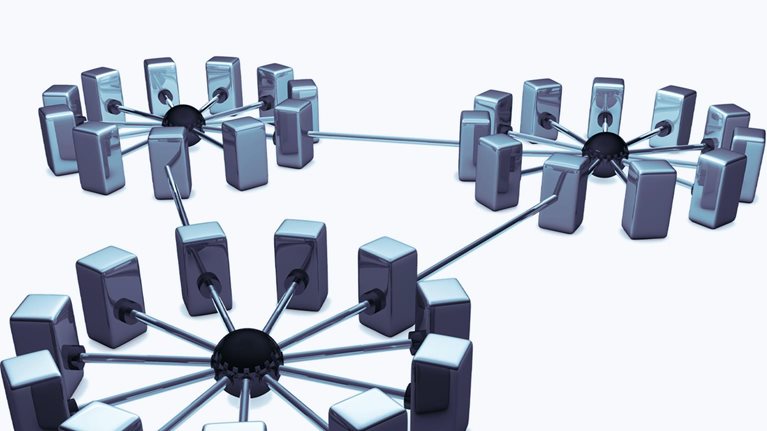How companies navigate the technology world to achieve sustainable competitive advantage is the defining business challenge of our time.
To be fair, this challenge isn’t new. But it’s an increasingly pressing one, with deep implications for how companies navigate a world where digital and AI are fundamentally reshaping how we work and live. Companies understand they need to meet the challenge, but most of them are struggling. McKinsey research shows that while 90 percent of companies have launched some flavor of digital transformation, only a third of the expected revenue benefits, on average, have been realized.1
Yet it’s also a challenge with enormous potential for the companies that get it right. In the banking sector, for example, where digital and AI transformations have been under way for the past decade, compelling empirical data shows that digitally transformed banks outperform their peers. We leveraged a unique data set, Finalta by McKinsey, to analyze 20 digital leaders and 20 digital laggards in retail banking between 2018 and 2022. The results were startling. Digital leaders improved their return on tangible equity, their P/E ratio, and their total shareholder returns materially more than digital laggards (Exhibit 1). Digital excellence is translating into financial outperformance.

This outperformance was propelled by a deeper integration of technology across end-to-end core business processes. This, in turn, drove higher digital sales and lower costs in branches and operations. How did the digital leaders accomplish this? By bringing business, technology, and operations more closely together to digitally innovate; by upskilling their organizations; and by building a distributed technology and data environment to empower hundreds if not thousands of teams to digitally innovate, day in, day out. This gets at the nub of why digital and AI transformations are so difficult—companies need to get a lot of things right.
Clearly, for digital and AI to deliver on their business transformation potential, the top team needs to be ready and willing to undertake the organizational “surgery” required to become a digitally capable enterprise. There are no quick fixes. You can’t simply implement a system or a technology and be done. Instead, success means having hundreds of technology-driven solutions (proprietary and off the shelf) working together that you continually improve to create great customer and employee experiences, lower unit costs, and generate value. But creating, managing, and evolving these solutions at enterprise scale requires a fundamental rewiring of how a company operates. That means getting thousands of people across different units of the organization working together and working differently to digitally innovate, constantly.

Creating value beyond the hype
The lessons learned from our work with more than 200 large companies across multiple industries show that capturing this kind of value from digital and AI requires building six critical enterprise capabilities (Exhibit 2). These allow rewired companies to integrate new technologies, such as generative AI, and harness them to create value. While companies may understand this at a high level, they struggle with how to build these capabilities successfully and ensure that they work together across the enterprise.

Our new book, Rewired: The McKinsey Guide to Outcompeting in the Age of Digital and AI, is all about the how. This article is adapted from that book and delineates the core aspects of what it takes for leaders to spur transformation across all six capabilities.
Before we go into detail, it’s worth highlighting two key findings. First, no digital and AI transformation can be successful without building a baseline of competence across all six capabilities. Second, these elements are interconnected and need to be managed that way: a good operating model, for example, can’t work without the right talent. Similarly, great technology won’t make much of an impact if users don’t adopt it.
You do not have to be a tech company to achieve excellence in digital and AI. Large, established companies can outcompete and capture value, but only when they are willing to commit to the hard work of rewiring their enterprise. This is a job for the entire C-suite, not just the CEO or the chief information officer (CIO). The cross-functional nature of a digital and AI transformation requires an unparalleled level of collaboration across the C-suite, with everyone having an important part to play in building these enterprise capabilities. Rewiring the business is an ongoing journey of improvement, not a destination. Let’s dig into the details of that journey.
Align the C-suite around a business-led road map
When evaluating stalled digital and AI transformations, we find that many of the issues that impede a program’s success can be traced back to insufficient planning and alignment. Misunderstanding among leadership at the strategic-planning stage will invariably lead to muddled execution in a company’s transformation. Because digital and AI transformations affect so many parts of the business, investing the necessary time to help make the transformation a success pays significant dividends in terms of clarity and unified action. The best companies make sure to get three early moves right.
Inspire and align the top team. Take the time to establish a common digital language, learn from other companies that are further along the journey, develop a shared vision among the C-suite, and explicitly agree on a set of commitments that match your ambitions. Consider the example of DBS Bank, one of the world’s most successful digitally transformed banks. CEO Piyush Gupta and his top leaders visited and learned from top tech companies around the globe and used those lessons to shape a vision around “Making Banking Joyful” and to commit to making DBS a tech leader. This kind of leadership alignment is crucial to ensuring a successful digital and AI transformation.
Get the ‘bite’ size right: business domains. Some companies struggle from the start of their digital and AI transformation by getting the scope of the change wrong. They start too small—believing that implementing a few use cases will lower risk—or they spread bets and resources too thinly across an uncoordinated set of initiatives. Both approaches typically produce little value. Successful companies, on the other hand, focus their efforts on a few important business domains, such as a production process or the customer journey, and transform them from end to end. As many as 80 percent of successful interventions in struggling digital and AI transformations are based on reanchoring the scope to spur a concerted effort against a few well-defined domains.
Commit to a contract with the C-suite. Effective rewiring requires companies to tie the transformation outcomes of each business domain to specific improvements in operational KPIs, such as reduction in customer churn or improvements in process yield. The team builds a road map where the digital solutions that underpin these KPI improvements are sequenced in a way to produce meaningful value in the short term (say, 12 to 18 months) and transformational value in the medium term (three to five years, for example). The plan explicitly accounts for the build-out of enterprise capabilities, such as hiring digital talent or modernizing data architecture. C-suite leaders commit to these KPI improvements, and the expected benefits are baked into their business objectives. Our rule of thumb is that a robust digital road map should deliver EBIT improvement of 20 percent or more.
When business leaders define an ambitious yet realistic transformation of their business domains with technology, they set in motion the flywheel of digital change. The resulting digital road map is their signature move and effectively acts as a contract that they commit to implementing.
Build your talent bench
No company can outsource its way to digital excellence. Being digital means having your own bench of digital talent—product owners, experience designers, cloud engineers, software developers, and so on—working side by side with your business colleagues. Digital transformations are, first and foremost, people transformations. The following are three actions that digital leaders take.
Create a cleansheet for your talent. Most companies have digital technologists, but many still face the hard work of reskilling their technology and IT organization. The aspiration should be to have 70 to 80 percent of your digital talent in-house, with 20 to 30 percent coming from outside the company and focused on specialized skills, flexibility, or both. Your talent pyramid should shift to a diamond shape, with more competent technologists and fewer novices. That’s because there is a step change in productivity from more experienced technologists. You should also have a healthy ratio of hands-on-keyboard technologists versus managerial roles. Rewired leaders target a 4:1 ratio (or better) of engineers to managers, versus the 1:1 found at many companies.
Get religion about skills. Rewired companies develop very granular skill progression grids supported by credentials. For example, Big Tech companies have up to ten levels of data engineers, each with different skill levels and compensation ranges. Without a precise calibration of skills, it becomes difficult to recognize distinctive technologists and compensate them accordingly. Skill progression also gets built into expert-based career tracks and in learning and development programs. In short, the whole digital-talent model revolves around fostering excellence in people devoted to their craft.
Build the team that will build your digital bench. Many HR organizations are hampered by slow recruiting and onboarding processes, rigid compensation frameworks, and outdated learning and development programs for digital talent. But transforming your entire HR organization and underlying HR processes to make them digital ready may not be practical. Setting up a special team focused on adapting current HR processes to win digital talent is the most pragmatic—and successful—way forward. We call this designated team the Talent Win Room (TWR). The primary mission of a TWR is to find technologists with the right skills and to build and continually improve all facets of both the candidate and employee experience.
These shifts in talent practices are not simple, but they are fundamental to becoming rewired with the right talent. While every C-suite executive will have a part to play in this talent reinvention, this is often the chief human resources officer’s signature contribution to the enterprise’s digital transformation.
Adopt a new operating model that can scale
Most companies have succeeded in standing up a handful of cross-functional agile teams. But scaling up so that hundreds or even thousands of teams work that way, as rewired businesses do, is a daunting challenge. Developing the right operating model to bring business, technology, and operations closer together is perhaps the most complex aspect of a digital and AI transformation because it touches the core of the organization and how people work.
Three leading models have emerged: digital factory, product and platform, and enterprise-wide agile. Each of these models is built on two core ideas. The first is that small, multidisciplinary agile teams, or pods, are the most effective and efficient way to develop software. Second, pods work together most effectively when some are focused on directly improving a customer or user experience (generally called product pods, although they can also be called experience or journey pods) while others focus on creating reusable services to accelerate the work of all pods (called platform pods). Examples of such services could include a customer-360 data set or an easy way for teams to provision compute and storage capacity.
The implementation of a new operating model is, in our opinion, one of the most significant pivots a company can make to become a rewired enterprise. There are two key moves to getting this right.
Select an operating model that supports your strategy. The digital factory is a separate organizational unit where people work together to build digital solutions for the business units or functions that fund the digital factory. Companies often initially select the digital-factory model because it is a self-contained operating unit and can be implemented relatively quickly (typically 12 to 18 months before it’s fully operational, though it can get started in a matter of weeks). BHP and Scotiabank, for example, have implemented this model.
The product and platform model is a more evolved version of the digital factory. While the digital factory might contain 20 to 50 pods, the product and platform model will typically have a few hundred pods, sometimes thousands for large companies. When companies move to a product and platform model, they are making a major strategic decision to realign large parts of the organization to better exploit technology in their core business. Amazon, Google, Itaú Unibanco, and JPMorgan Chase have all implemented this model.
Finally, the enterprise-wide agile model builds on the product and platform model and extends the benefit of agile to the entire business, not just the technology-intensive areas. For example, key account sales and R&D can also benefit from working in small, cross-functional teams. Companies adopt this model when they believe that customer centricity, collaboration, and flexible resource deployment are key performance differentiators across the entire enterprise. ING and Spark New Zealand have successfully implemented this model.
Professionalize product management. A crucial difference between tech companies and their peers in other sectors is the degree to which they have embedded product management capabilities in their operating models. This capability, in our opinion, makes or breaks the implementation of a new operating model. Some 75 percent of business leaders in a McKinsey survey responded that product management best practices aren’t being adopted at their companies, that product management is a nascent function within their organizations, or that it doesn’t exist at all.2 That’s a problem. It’s also hard to recruit great product managers because understanding the industry and the company context matters. Most companies end up reskilling and building new career tracks for this rare talent, but this requires substantial investments to ensure good results.
The shift to a new operating model is the signature move of CEOs in rewiring the company. Only they can catalyze such large-scale organizational change.
Technology for speed and distributed innovation
The main purpose of technology within a rewired company is to make it easy for hundreds, if not thousands, of pods to constantly develop and release digital innovations. This requires a distributed technology environment where every pod can access the software development tools, data, and applications they need. While leaders hoping to create that environment have a raft of decisions to make, three priorities stand out.
Kit out a technology toolbox. Just like woodworkers, surgeons, or plumbers, software developers need the proper tools to do their work. As an organization scales from five agile pods to 100, or even more than 1,000, it doesn’t make sense for pod members to be calling IT every time they have a basic request, such as additional storage capacity or access to a collaboration tool. Leading companies build a developer platform: a self-service portal that makes it easy to access and use all the standardized and company-approved tools.
Use APIs without exception. Once developers have their tools, they need access to data and existing app functionalities to build their solutions. Application programming interfaces (APIs) do that by systematically minimizing dependencies in the architecture by making application functionalities and data easily accessible. Without it, pods will constantly find themselves depending on other pods. Amazon’s Jeff Bezos was so adamant about using APIs that he wrote a famous memo about it, which fundamentally changed Amazon and the world of software. The memo essentially said that all teams were expected to expose their data and functionality through service interfaces (that is, APIs) and to communicate with one another through only these interfaces. No other form of inter-process communication would be allowed. No exceptions.
Automate software delivery. Have you ever wondered how an app on your phone can be upgraded so frequently? That seamless functionality is made possible by software delivery automation, also known as CI/CD: continuous integration and continuous delivery. This is the method for systematically automating all steps, including quality checks, testing, packaging (that is, containerization), and staged deployment of the solution to the user. With CI/CD, updates that used to take weeks or months can now be completed in minutes, allowing pods to release incremental improvements weekly or even daily and thus unleash much faster innovation cycles. You won’t be able to achieve distributed digital and AI innovation if pods aren’t able to release code to a production environment quickly and easily.
This fixation on automation needs to carry over to AI and machine-learning (ML) models. These models are like living organisms—they need to be constantly recalibrated as new data accumulate and then monitored in real time for drift and biases. When this doesn’t happen, AI/ML models fail to transition to full-scale production. Solving for this has required a specialized type of automation called machine learning operations (MLOps). For example, Vistra, a leading energy company, built MLOps automation to support more than 400 AI/ML models deployed to optimize different parts of its power plant operations.
Most CIOs have started their companies’ journey to build a robust developer platform, decouple the components of the architecture from one another through APIs, and automate their software delivery pipeline. But we know very few companies that have scaled this across their enterprise. The change management efforts are significant, and the software engineering talent required is in short supply. Creating a technology environment that enables distributed digital and AI innovations is a cornerstone capability of rewired enterprises and a signature contribution by the CIO, the chief data officer (CDO), or both.
Embed data everywhere
In established companies, data is often a source of frustration. As much as 70 percent of the effort involved in developing AI-based solutions can be attributed to wrangling and harmonizing data. Unless data is thoughtfully sorted and organized for easy consumption and reuse, scaling solutions can be a big challenge. The ability to constantly improve customer experience and drive down unit cost depends on giving each digital and AI team (near) real-time access to data. Companies can focus on three areas to achieve this.
Turn to reusable building blocks: data products. Data products are the secret sauce for scaling AI. They help deliver data-intensive applications as much as 90 percent faster, at 30 percent lower cost, and with a reduced risk and data governance burden. A data product delivers a high-quality, ready-to-use set of data in a way that people and applications across the organization can easily access and consume. For example, a data product could provide a 360-degree view of an important entity, such as customers, employees, product lines, or stores. Companies can prioritize building data products that have the broadest application, that are critical for teams developing priority solutions, and that are unique. Building data products requires dedicated teams and investments.
Install the data architecture ‘plumbing.’ Data architecture is the system of “pipes” that deliver data from where it is stored to where it is used. When implemented well, data architecture hastens a company’s ability to build reusable and high-quality data products and to put data within reach of any team in the organization. We have seen very rapid technological progress in this field. The emergence of new architectural patterns such as the “data lakehouse” (an innovation that combines the capabilities of a data lake and a data warehouse into a single, integrated platform) makes it easier for companies to solve for both their business intelligence and their AI needs.
Federate data governance. Data touches all aspects of an organization, so its governance needs to account for that complexity. Rewired companies deploy a federated model where a central function (that is, a data management office) sets policies and standards and provides support and oversight, while business units and functions manage activities such as developing data products and building data pipelines to enable consumption.
A data environment that allows for easy data consumption by hundreds of distributed teams is another signature move of the CIO in collaboration with the CDO. It enables data-driven decisions, feeds real-time decision-making systems, and propels faster continuous-improvement loops.
Unlocking adoption and scaling
Developing a good digital solution can be complex and difficult. But getting customers or business users to adopt that solution as part of their day-to-day activities and then scaling that solution across the enterprise are often the biggest challenges. Successful companies concentrate on the following three moves.
Focus equally on adoption and development. User adoption starts with developing great technology solutions that offer an excellent customer experience. But companies often underestimate all the additional elements of the business model that need to be changed to secure adoption. For instance, an insurance company that developed analytic solutions to help agents upsell customers on policies also needed to make changes to pricing algorithms, sales force incentives, distribution and customer engagement models, and metrics and performance indicators. That end-to-end system approach, with a focus on the people side of the equation, is what differentiates digital leaders. They achieve this by making the business accountable for the end-to-end transformation of the domain. As a rule, for every $1 spent on developing digital and AI solutions, plan to spend at least another $1 to ensure full user adoption and scaling across the enterprise.
Scale with ‘assetizing.’ Replicating the adoption of a solution in different environments, such as a network of plants, or in different geographic markets, customer segments, or organizational groups is challenging. Companies often find themselves redoing a lot of work and struggling to tailor solutions to local environments. All this extra work is a scale killer, and that’s why 72 percent of companies stall at this stage. Digital leaders solve this by “assetizing” solutions, which typically allows 60 to 90 percent of a digital and AI solution to be reused, leaving just 10 to 40 percent in need of local customization.
Track what matters. No one will debate the need to measure the progress of a digital transformation. But the question is what to measure and how. Performance tracking that is poorly designed and lacking the right supporting tools can quickly crumble under its own weight. Rewired companies take the pods responsible for objectives and key results and link them to operational KPIs, tracking the progression of each pod in a disciplined stage gate review process.
The ability to capture the full economic potential of digital innovations is a core differentiator between digital leaders and laggards. Building this capability is the signature move of business unit and function leaders.
The capabilities we have laid out for a successful digital and AI transformation present a rich “how to” agenda. You may be wondering where to start your rewiring journey. Why not start where we began this article: by bringing the top team together and having them reflect on your journey thus far? A digital and AI transformation is ultimately an exercise in constant evolution and improvement. If you accept this premise, it will change your perspective on how you approach this critical challenge. To borrow Jeff Bezos’s expression to Amazon shareholders about the importance of operating like a digital native: it’s always day one for digital and AI transformation.





